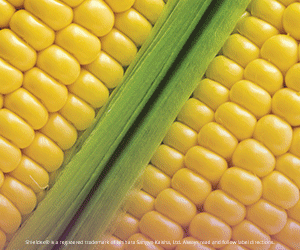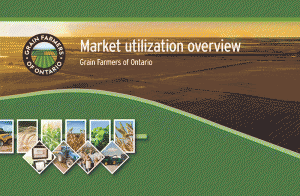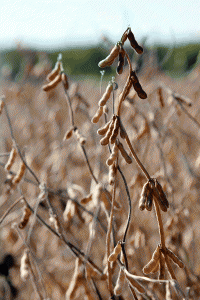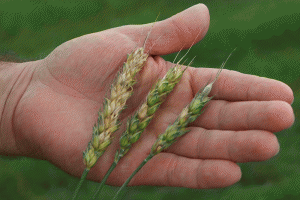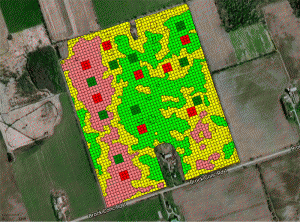Hybrid wheat
NEW SYNGENTA RESEARCH

“CREATING VALUE FOR the wheat industry” — this is the goal Syngenta plans to achieve with hybrid wheat. The integrated crop solutions company identified a need in the market to take wheat to the next level and make it financially competitive with corn and soybeans.
“Farmers say that agronomy in wheat is missing,” says Darcy Pawlik, product marketing lead for Syngenta, of the creation process behind Syngenta’s hybrid wheat. Pawlik spoke at the Syngenta North America Media Summit in Raleigh, North Carolina on a number of Syngenta’s upcoming technologies, including hybrid wheat. They are currently focusing on conventional variety development while transitioning to also include hybrid wheat.
Syngenta recognizes that many organizations are making hybrid wheat, but not with price efficiency. Hybrid barley in Europe was a success story for Syngenta that makes them confident in moving forward with hybrid wheat.
“We took lessons from hybrid barley in Europe. We can make hybrid wheat, but can we at scale? It also has to be affordable for the farmer,” says Pawlik.
After affordability, there are other considerations Syngenta makes to ensure the agronomy in hybrid wheat is strong.
DECISION PROCESS
The audiences or users of wheat are significant to Syngenta throughout the development process of hybrid wheat.
“For farmers, we plan to increase the consistency of wheat yield year-to-year,” said Pawlik.
As much as yield is important, so is “harvestability” because as farms become larger with better equipment, farmers have the ability to get through acres much quicker. Yield and the ability to harvest are key target areas for Syngenta in the area of hybrid wheat.
End-users are another consideration for Syngenta in the development process of wheat. They have identified that millers are concerned with declining wheat acres in relation to other grain crops. Driving more farmers to grow wheat again is a main concern for millers or their industry will suffer. There are also certain quality characteristics millers look for in wheat and Syngenta selects for this in the development of their hybrid wheat. This ensures the wheat that farmers are growing will be in demand.
Consumers are becoming more aware of their food and how it is made. More and more, consumers are concerned with sustainability, so Syngenta’s hybrid wheat will have more yield per kernel. As well, with growing consumer apprehension around GMOs, hybrid wheat will offer an alternative option in the marketplace.
This is the key to keep hybrid wheat on the market long term. Conventional wheat cannot always meet all needs, leaving a space for hybrids; Syngenta feels they are better positioned than other companies to develop affordable hybrid wheat that meets these needs.
UNIQUE ABILITIES
“Syngenta has a breeding research station in all wheat growing areas,” says Pawlik. They can breed wheat in each area tailored to the region the station is located in. This also means that researchers can select from a huge base of plants and traits for their hybrid wheat parents.
Syngenta boasts the largest wheat breeding portfolio at 100 lines currently available. They work on 300,000 lines of conventional wheat each year, which equals 10 lines released yearly. Although this is conventional wheat breeding, Pawlik feels this background in wheat breeding positions them well to be competitive in the hybrid wheat market. “We have been breeding wheat in Canada since the 1970s,” said Pawlik.
Syngenta’s tools for wheat breeding include a long term improvement of the germplasm base. They also use double haploid breeding, native trait stacks, and marker assisted recurrent selection. In Canada, they are working with the Canadian Wheat Alliance, a commitment between organizations in Saskatchewan that work to “support and advance research that will improve the profitability of Canadian wheat producers”. Syngenta benefits while also allowing the company to “share information with the Canadian market,” says Pawlik — a mutually beneficial arrangement.
In the United States, hybrid wheat takes five to seven years for the approval process and in Canada there is even more rigorous testing. Hybrid wheat is still a few years away from being in the marketplace, but Syngenta feels they are well situated to be the company that brings this to farmers. They have already seen 10 to 15 per cent increases in yield with their early hybrid wheat.
“Syngenta analytics mean smarter breeding that is driven by precision and data,” says Dr. Nancy Tout, territory research and development head, Syngenta Canada. “Farmers’ challenges require sustained innovation.”
CHEMCHINA ACQUISITION OF SYNGENTA
As the Syngenta North America Media Summit in Raleigh, North Carolina kicked off, the topic on many minds was the acquisition of Syngenta by ChemChina and what this means for the company.
“Syngenta will remain Syngenta. This is comforting to customers, and for us to run without much change,” said Vern Hawkins, president of Syngenta North America.
ChemChina will not be managing Syngenta and the management team will remain with Syngenta.
Ponsi Trivisvavet, Syngenta North America region director and president of Syngenta Seeds, Inc., feels that industry consolidation in general is inevitable because the market and money is shrinking while time is increasing. People are therefore investing in innovation.
“Customers should support this because of the importance of having choices in the market. ChemChina provides choice of traits and they will continue to be provided. This choice is critical,” said Trivisvavet.
Delays in regulatory approval have pushed back the timeline of the Syngenta sale to ChemChina, but the company remains positive about the benefits of the acquisition to both companies. For more information on the acquisition visit: www.syngenta-growth.com. •


